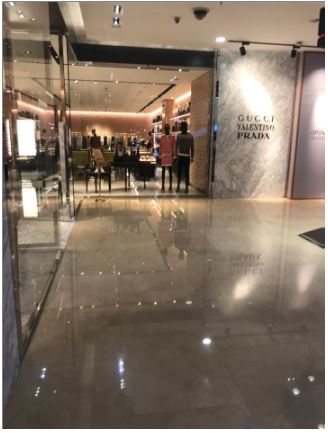 In China, foreign brand owners are becoming increasingly concerned about unauthorised retailers using their trademarks on signboards. The legal issue is complicated by the fact that these unauthorised retailers are selling genuine goods which originate from parallel imports.
In China, foreign brand owners are becoming increasingly concerned about unauthorised retailers using their trademarks on signboards. The legal issue is complicated by the fact that these unauthorised retailers are selling genuine goods which originate from parallel imports.
There are no explicit provisions addressing parallel imports in the Trademark Law or in the Anti-unfair Competition Law.
The Chinese courts have acknowledged the legality of parallel imports in recent years. The Beijing High Court issued a document entitled "Several Legal Matters to Note in Current Intellectual Property Trials" (7 May 2016) where it addresses "whether parallel imports constitute trademark infringement", by stating that if the suspect goods are sourced from the rights holder or the authorised dealer, the rights holder would have fully realised the commercial value of the trademark from the 'first' sale of such goods, and thus could no longer prevent others from carrying out 'secondary' sales or reasonable commercial marketing of these goods.
This means that selling parallel imports in China does not constitute trademark infringement per se.
However, in practice, the courts sometimes find ways to penalise sales of parallel imported goods. If the goods are even partially altered so as to make them substantially different from the original products, the court may deem the sale an act of trademark infringement or unfair competition.
The courts found trademark infringement or unfair competition in the following cases:
- In (2015) Hu Zhi Min Zhong 185 the defendant used OUTLETGUCCI in a shopfront signboard and simultaneously used GUCCI and OUTLETGUCCI logos for interior decoration.
- In (2015) Yue Gao Fa Min San Zhong No 363 the defendant used MO of GUCCI as a shop name and GUCCI as a prominent logo on advertising materials inside the shopping mall where the shop is located.
- In Victoria's Secret ((2014) Hu Gao Min San (Zhi) Zhong 104) and Lenovo ((2014) Su Zhi Min Zhong 0142), the defendants used the accused trademarks in shop interior decoration and on sign boards, shop furniture (eg, cashier desks and counters), marketing materials (eg, employee name cards (Victoria's Secret)), business cards and catalogues (Lenovo).?
The abovementioned decisions suggest that a retailer without permission to use a trademark may file a valid defence if it is able to prove that:
- the trademark's use is necessary;
- the trademark's use is reasonable in scope;
- the trademark is used in good faith; or
- the relevant public must not be misled so as to misconstrue that an association exists between the retailer and the trademark owner, leading to possible misidentification and confusion.
If the retailer meets none of these conditions, a trademark fair use defence cannot be established.
Where a retailer uses multiple trademarks on a signboard without the rightsholder's permission (see Figure 1), it will be even more difficult for the rights holders to establish unfair use.
The retailer may argue that it is not using any of the trademarks prominently and that, since there are multiple trademarks registered to different brand owners on the signboard, it is unlikely to cause confusion among the relevant public as to the association between the retailer and each brand owner.
However, a retailer's unauthorised use of multiple trademarks does not mean that no action is possible. Arguably, the abovementioned parameters may still serve as a point of reference. Therefore, the following grounds may serve as a basis for claiming unfair trademark use:
- the use of one or more trademark(s) is unnecessary;
- the use goes beyond the reasonable limits;
- the use is not in good faith; or
- the use may cause the relevant public to misunderstand that the retailer is authorised to use the mark or has a certain association with the trademark owner(s), thereby causing possible misunderstanding and confusion.



